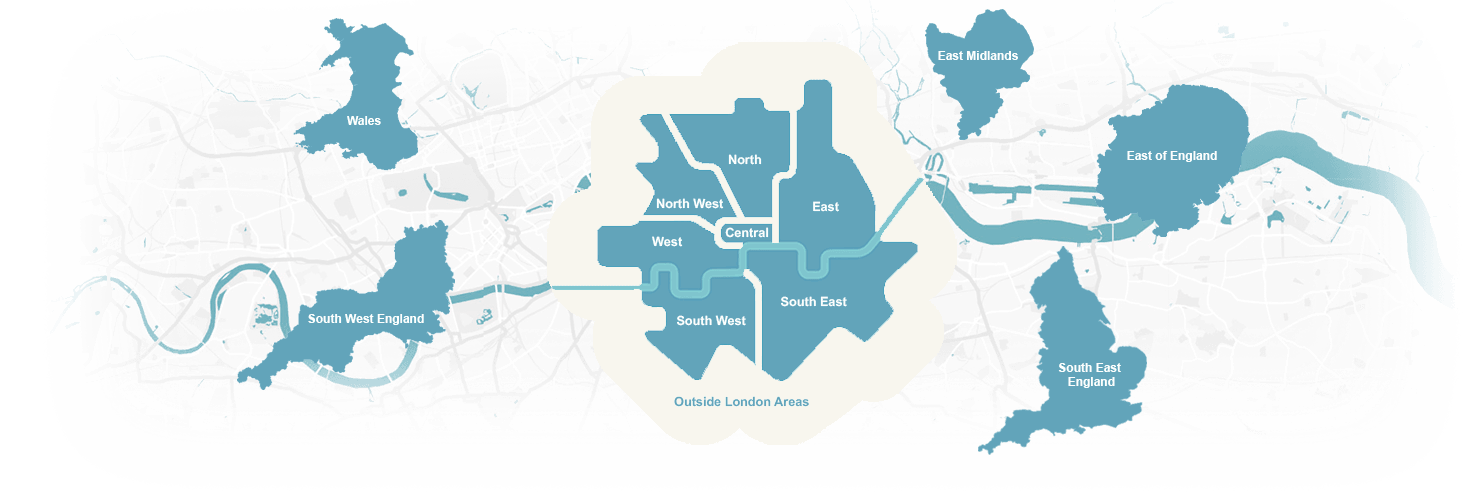There are many different removal companies out there, and there are endless removal services offered. But it’s hard to know just which removal services you will need. You may need someone to help you pack, especially if you are moving in a hurry or on short notice. You may need just a North London Man and Van if you are moving just a few things. Maybe your removal requires the full package – assessment, packing, storage, transport, unpacking and more. Whatever it is that you need, know what you are getting ahead of time. Some people make the mistake of hiring a moving company that doesn’t communicate very well with its customers. The end result is a larger bill than the customer expected. But at Removal Company, we always communicate with our customers, and we never provide services that will cost you extra without discussing it with you first. You will be assigned a moving adviser to help navigate the process, so you won’t have any trouble making changes or asking questions. Call today on to get a free, no-obligation estimate of your removal, then have us over to do an assessment. This is the best way to begin your preparation and will provide you with very useful information for planning your budget. Take it from the North London moving experts – moving need not be a major headache!.
North London is the northern region of England’s capital city. By some measures, it is the entire area north of the River Thames, which essentially divides Greater London into two halves, running east-west through the city. This definition is used by the Boundary Commission and means that North London makes up nearly two thirds of the entire city. By the Boundary Commission’s map, North London includes the City of London and all its historic areas, the East and West End and most of the Tube. According to this definition, this large section of the city includes not only the City of London, but a number of London boroughs as well. Those boroughs are Barking and Dagenham, Brent, Camden, Barnet, Enfield, Ealing, Hammersmith and Fulham, Haringey, Hackney, Harrow, Hillingdon, Havering, Islington, Kensington and Chelsea, Redbridge, Newham, Waltham Forest, Tower Hamlets and Westminster. Although the London Borough of Richmond upon Thames falls on both sides of the River, it is considered part of South London by the Boundary Commission.
Within North London, there are a number of boroughs that are considered to be Inner London, namely Kensington and Chelsea, Islington, Hammersmith and Fulham, Hackney, Camden, Westminster and Tower Hamlets. The rest are part of Outer London. These designations were made in 1965 and still stand today. But North London doesn’t only refer to the part of the city that lies north of the River Thames. It is also the name given to one of the sub regions in the London Plan. The North London sub region has existed since 2004, even though the boundaries changed slightly when the sub regions were re-designated in 2008. Originally, the North London sub region has four boroughs lying within its boundaries: Enfield, Barnet, Haringey and Waltham Forest. But today, Camden, Islington and Hackney have been added to the list of boroughs that lie within the North London sub region, bringing the total to seven. More than one million people call this sub region home.

There’s plenty to do in North London, especially if you consider it the larger half of the city, which includes the City of London and the East and West Ends. That means, theatre, shopping, dining, music, museums and historical sites galore. Even if you narrow the definition to just include the boroughs of the sub region, there are plenty of things to do with the kids and the whole family. There are plenty of parks and gardens, lots of historic buildings, a number of art galleries and, of course, those museums. You’ll find a great mix of fine dining and budget eats, depending on which neighbourhood you are in, but rest assured that you can find almost anything in North London.
When you have settled on your move out date, or even the week that you would like to be moving, you can go ahead and book your removal vehicle. Depending on the size of your home and the number of large furniture items you are moving, you may need a full-size moving lorry. But if you are living in a one-bedroom flat and you don’t have much stuff, you might be able to get the job done with just a man with a van. Think of the savings!. Another great way to save is to donate or sell a lot of unwanted items prior to your move – you’ll need fewer packing materials that way and you will spend less time lifting and hauling boxes. You can rent a smaller storage unit and reap the benefits of a smaller moving crew, all leading to a smaller bill in the end. Finding the perfect place to live is the hard part. You have to like the neighbourhood, the flat, the community, etc. But finding the perfect moving company to get you there is easy, just dial anytime!.
The following postcode areas are included in North London (the sub region): N1, N2, N3, N4, N5, N6, N7, N8, N9, N10, N11, N12, N13, N14, N15, N16, N17, N18, N19, N20 and N21. This interesting area also has a diverse mix of housing, ranging from budget to expensive The areas that are most affordable are found in the N11 and N13 postcode areas, including Whetstone. Tottenham and Edmonton are slightly more expensive, though still quite affordable. Stoke Newington, Finchley, Highgate, Southgate and Holloway are a step up in terms of home prices and Islington, Finsbury Park, Muswell Hill, Totteridge and Crouch End make up the sub regions most expensive housing, though it is not the priciest in the city by any means.


Areas we cover
- Dependable Relocation Company Islington

- Exceptional House Removals Hampstead

- Highly Rated Furniture Removal Belsize Park

- 5-Star Moving Service Camden

- Premier Man with Van Removal Services Finchley

- Top-notch Office Removals Highbury

- Highly Rated Relocation Service Shoreditch

- Incomperable Removal Man St John_s Wood

- Inexpensive Household Removals Swiss Cottage

- 5-Star Moving Service West Hampstead

- Outstanding Moving Company Brent

- Cheap Removals Services Finsbury Park

- Highly Rated Removals and Storage Harringay

- Top-level Moving Service Kentish Town

- Efficient Removal Services Queen_s Park

- High-quality Man with Van Removal Services Tufnell Park

- Incomperable Removals Services Barnet

- Best Man with a Van Removals Edgware

- Top-level Removals and Storage Enfield

- Trustworthy Relocation Company E4

- Premier House Removals EN5

- Incomperable Corporate Removals EN6

- Fast Office Removals HA3

- Trustworthy Removal Company N8

- Amazing Man and Van Removal Services N14

- Exceptional Home Removals NW8

- Top-class Relocation Service EN1

- Cheap Removals Services N12

- Best Movers NW3

- Dependable Man and Van Service EN3

- Outstanding Moving Company N2

- Expert Removals Services N21

- Great Man and a Van Hire NW7

- Leading Relocation Company HA0

- Trouble-free Home Removals HA1

- Highly Rated Moving Service HA2

- Premier Removals and Storage HA6

- First-class Removal Services HA9

- Exceptional Corporate Removals N3

- Cheap Removals Service N11

- Top Rated Man and Van Removals N15

- Leading Man with a Van Removals N17

- Affordable Man with Van Removal Service N20

- Trustworthy Moving Company N22

- Efficient Removal Services NW4

- Skilled Movers NW9

- Recommended Removals and Storage NW11

- Efficient Man with Van Removal Services HA8

- Helpful Removal Man N5

- Inexpensive Removals Prices N10

- Highly Rated Relocation Services NW5

- Incomperable Removals Services N6

- Outstanding Man and Van Service N19

- Great Man and Van Removal Services N4

- Inexpensive Removal Services N1

- Efficient Man and a Van Hire N7

- Highly Rated Removals and Storage N16

- Fast Relocation Service NW1

- Amazing Man with a Van Removals NW2

- Trouble-free Home Removals NW6

- Cheap Office Removals NW10

- Exceptional Relocation Services N13

- Dependable Man with a Van Removals N18

- Premier Removals and Storage EN2

- Excellent Removal Man EN4

- High-quality Removal Services EN8

- Exceptional Furniture Removal EN7

- Cheap Removals Services WD19

- Low Cost Removals WD6

- Top-notch Moving Service N9

- 5-Star Household Removals WD5

- Trouble-free Corporate Removals Barnsbury

- Affordable Man with Van Removal Services Alperton

- Great Man and Van Removals Archway

- Incomperable Man and a Van Hire Canonbury

- Top Rated Removals Service Chalk Farm

- Reliable Removal Services Cockfosters

- Leading Moving Company Colindale

- Highly Rated Removal Company Bounds Green

- Reliable Removal Service Bowes Park

- Amazing Man and Van Removal Services Brent Cross

- High-quality Moving Service Brondesbury

- 5-Star Relocation Services Brunswick Park

- Incomperable Corporate Removals Belmont

- Efficient Man with a Van Removals Hendon

- Great Man with Van Removal Service Highgate

- First-class House Removals Hornsey

- Highly Rated Removal Man Hampstead Garden Suburb

- Recommended Moving Company Harlesden

- Exceptional Furniture Removal Harrow on the Hill

- Top-level Man and Van Service Harrow Weald

- High-quality Removals and Storage Holloway

- Inexpensive Removals Service Hoxton

- Fast Man with a Van Removals Kensal Green

- Efficient Man and Van Removal Services Kenton

- Top Rated Furniture Removal Kilburn

- Professional Relocation Services Kingsbury

- Top-notch Household Removals New Southgate

- Outstanding Man and Van Removal Service North Finchley

- Dependable Relocation Company North Harrow

- Exquisite Man and Van Service Northwood

- Incomperable Man with a Van Removals Old Oak Common

- Trouble-free Relocation Service Osidge

- Cheap Man and Van Removal Services Palmers Green

- Amazing Relocation Company Pentonville

- Low Cost Removal Service Primrose Hill

- High-quality Relocation Company Colney Hatch

- Premie rHouse Removals Lisson Grove

- Efficient Moving Company Manor House

- Inexpensive Removals Prices Mill Hill

- First-class Moving Company Muswell Hill

- Highly Rated Office Removals New Barnet

- Exceptional House Removals Cricklewood

- Cheap Removals Services Crouch End

- Efficient Man and Van Removals Dartmouth Park

- Top Rated Removals and Storage De Beauvoir Town

- Top Rated Removal Company Dollis Hill

- Reliable Man with a Van Removals East Finchley

- Best Man and a Van Hire Queensbury

- Premier Removals Services Seven Sisters

- Best Value Removals and Storage Shacklewell

- Affordable Man and a Van Hire Enfield Town

- Great Moving Service Enfield Wash

- Leading Man with Van Removal Service Fortis Green

- Inexpensive House Removals Friern Barnet

- High-quality Moving Service Golders Green

- Top-level Man and a Van Hire Gospel Oak

- Low Cost Removals Tottenham Hale

- Efficient Man and a Van Hire Tottenham

- Leading Man with Van Removal Service Totteridge

- Exceptional Relocation Services Turnpike Lane

- First-class Home Removals Wealdstone

- Helpful Movers South Tottenham

- First-class Moving Service Southgate

- Best Removal Company Stamford Hill

- Cheap Household Removals Stanmore

- Expert Moving Service Stoke Newington

- Reliable Moving Company Stroud Green

- Excellent Man and Van Removal Services Wembley

- Trouble-free Removals and Storage West Green

- First-class Man and Van Service West Harrow

- Top-notch Relocation Company Whetstone

- Exceptional Corporate Removals Willesden

- Highly Rated Removals Services Winchmore Hill

- Fast Furniture Removal Wood Green

- Affordable Removals Prices Woodside Park

We had a complicated move with lots of items that needed packing up but the team from Amazing Moves made it look easy. We will definitely be hiring them again when we need to move in future - very impressed with their removals company!
The best moving company around, in my opinion! They did take care of everything during my house move, which allowed me to do nothing but just relax. The movers were friendly, professional and efficient.
The most professional moving company around! These guys know how to complete a quality move without taking any shortcuts. The packing up at our old place went like clockwork, and they were super careful during the drive over to our new place.
We've moved house so many times we know what we want from a moving company and to be honest, we were starting to doubt it existed. But our experience with the guys at Amazing Moves completely changed our mind: they were so kind and helpful, they used a crate for all our fragile belongings. They were wonderful, I couldn't recommend them highly enough.
 Amazing Moves
020 3970 0488
Unit 3 Hanworth Trading Estate Hampton Road West
Amazing Moves
020 3970 0488
Unit 3 Hanworth Trading Estate Hampton Road West
Show all

 Get a Quote
Get a Quote

